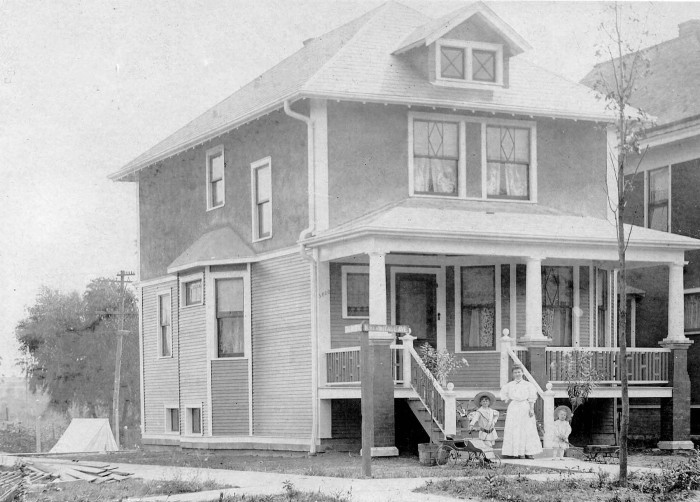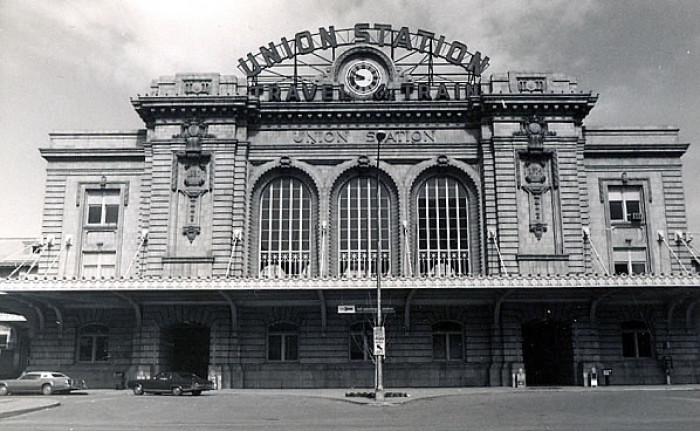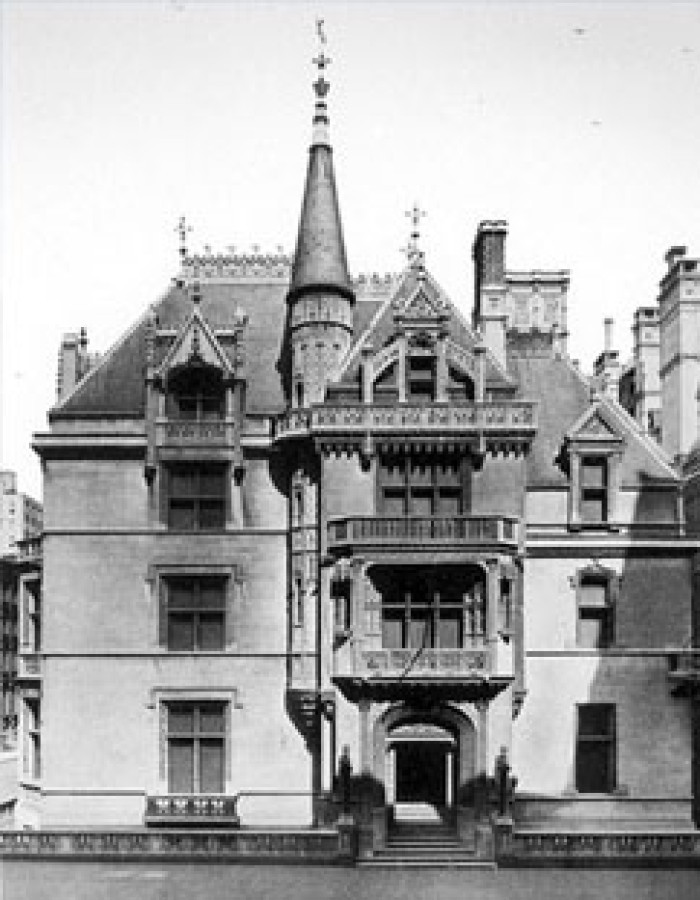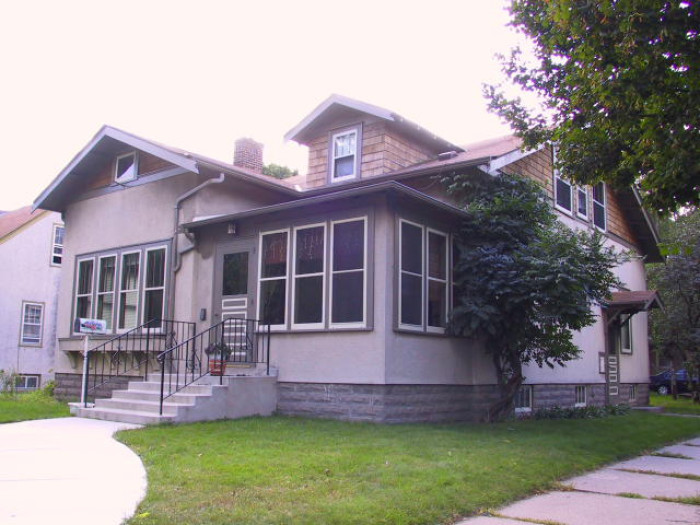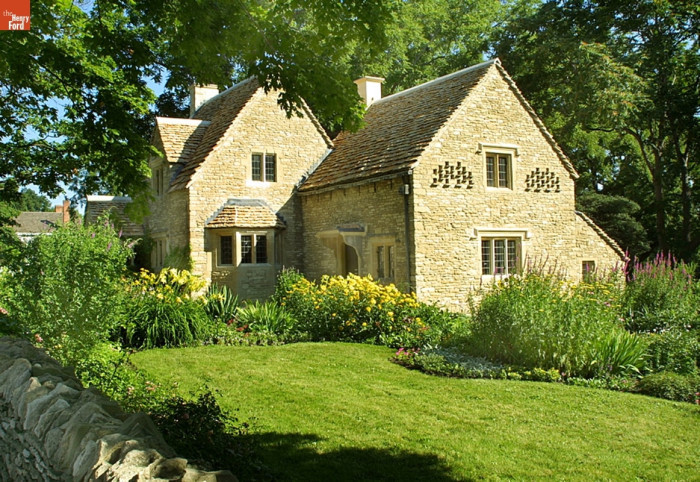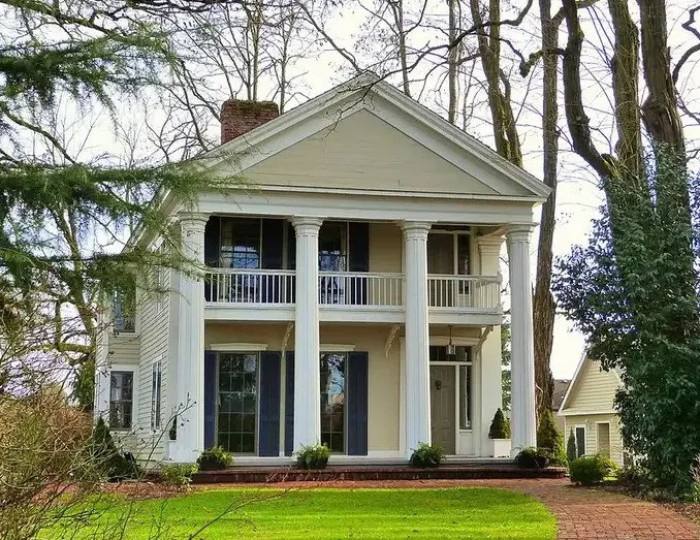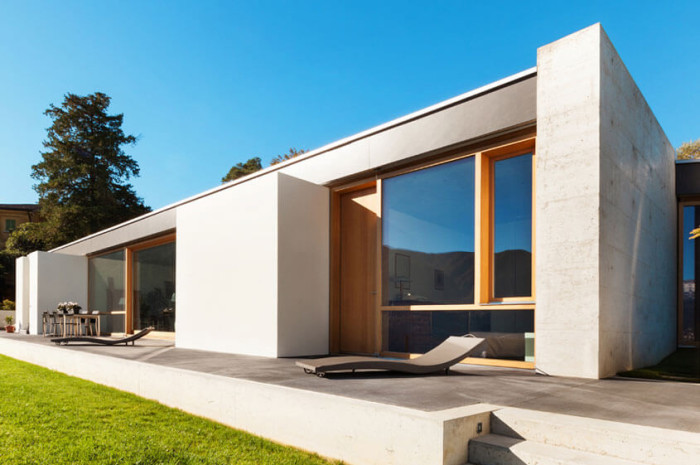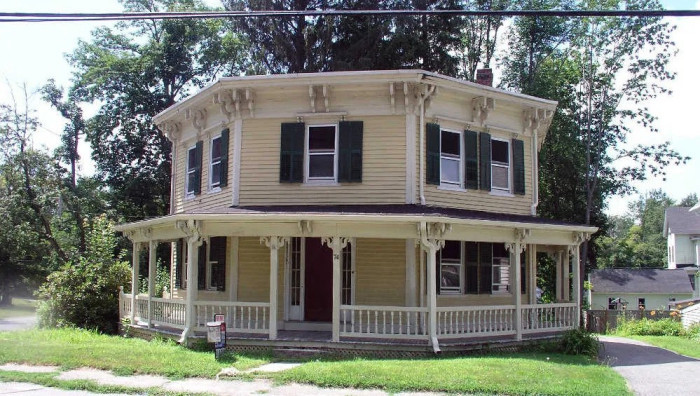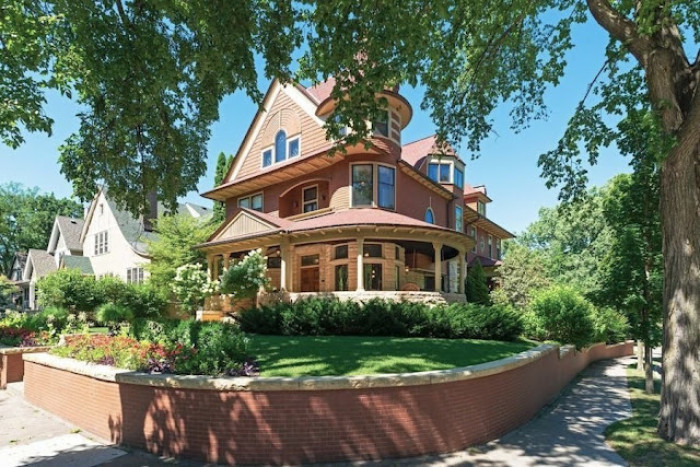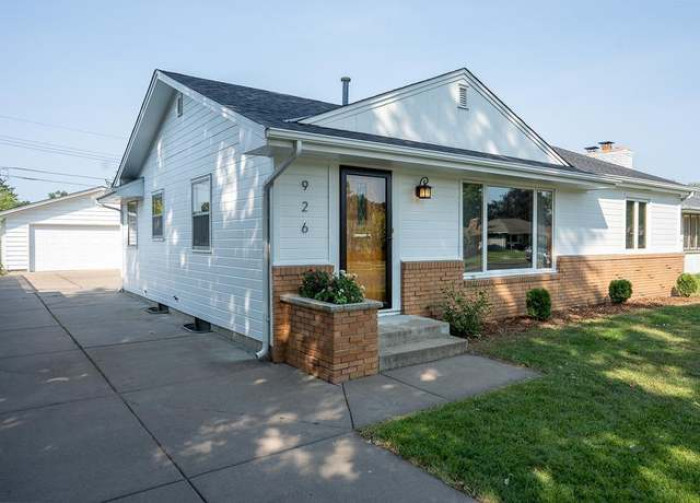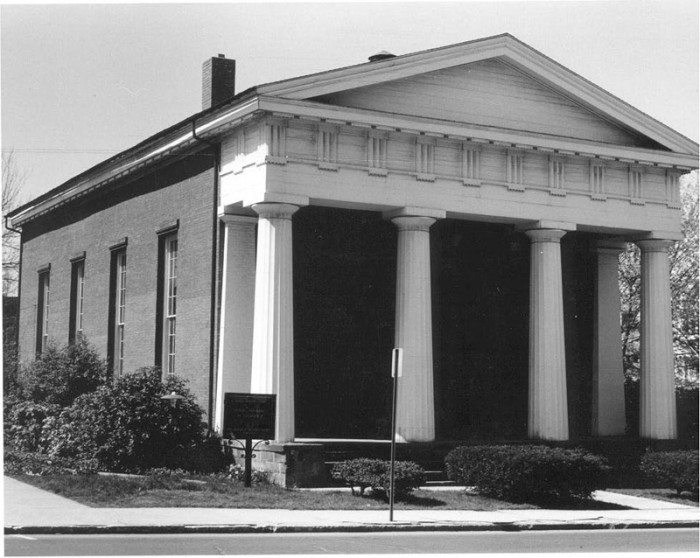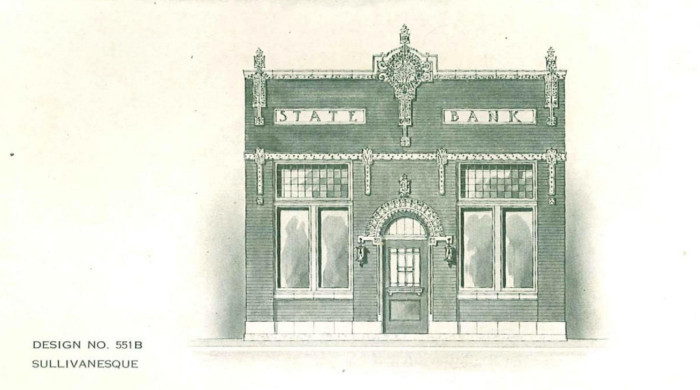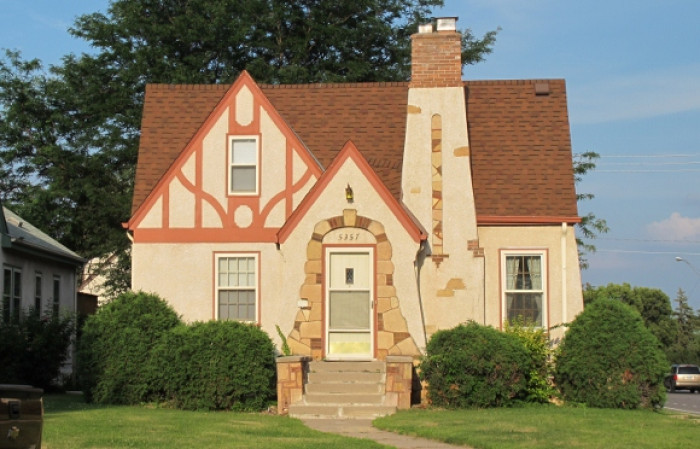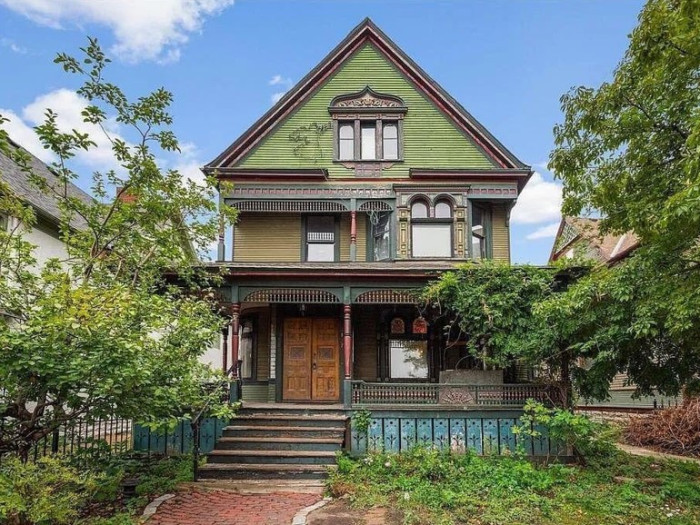Comprehensive Guide to Architectural Styles: How to Identify Your Home’s Architecture
Not sure if your home is Tudor, Craftsman, or Mid-Century Modern? This comprehensive guide breaks down architectural styles with photos and defining characteristics to help you identify your home’s unique history.
February 20, 2025
Ever wondered what architectural style your home is? Whether it’s a charming Craftsman, a stately Colonial, or a sleek Mid-Century Modern, every home tells a story through its design. This guide will help you recognize key architectural features and identify your home’s style with ease.
From classic American styles to influences from Europe and beyond, we’ve compiled a list of the most common architectural styles found across the United States. Use this resource to uncover the history behind your home’s design and gain a deeper appreciation for its unique character.
American Four Square
Description: The American Four Square features a simple, symmetrical design with large front porches supported by sturdy columns. It is a practical, yet charming style known for an efficent layout, boxy shape, and spacious interior embodying early 20th-century family living.
Example Area: Suburban midwest neighborhoods like Minneapolis and Chicago.
Common Years Built: 1900–1920
Photo credit: Julia Bachrach Consulting
Beaux Arts
Description: The Beaux Arts Style is characterized by elaborate ornamentation and classical elements.
Example Area: Commonly found in civic buildings and public spaces, like train stations.
Common Years Built: 1885-1930
Photo credit: History Colorado
Bungalow
Description: Bungalows are cozy, single-story or 1.5-story homes with low-pitched roofs, wide eaves, and large, welcoming front porches. Designed with a handcrafted feel, they emphasize natural materials and simple, functional layouts.
Example Area: Most common on the West Coast, specifically California.
Common Years Built: 1910–1930
Photo credit: Houses of Minneapolis
Cape Cod
Description: Cape Cod homes feature steeply pitched roofs, dormer windows, and shingled exteriors that are compact and symmetrical. This style is traditional and practical, offering a cozy aesthetic rooted in Colonial American design.
Example Area: Traditional East Coast New England design.
Common Years Built: 1930s–1950s
Photo credit: Redfin
Chateauesque
Description: Inspired by the Grand Chateaus of France, Chateuesque homes are noticed by their ornate details, large towers, and steeply pitched roofs. They inspire a sense of luxury and romanticism, medieval with modern day!
Example Area: Northeast United States, especially New York City, and Paris.
Common Years Built: 1880s-1910s
Photo credit: Washington Dept. Of Archaeology and Historic Preservation
Craftsman
Description: Craftsman homes emphasize handcrafted details, low-pitched gable roofs, exposed rafters, and expansive porches supported by tapered columns. They embody the Arts and Crafts movement, focusing on natural beauty and simplicity.
Example Area: Most common in California, notably Pasadena and San Francisco.
Common Years Built: 1905–1930
Photo credit: Houses of Minneapolis
Colonial
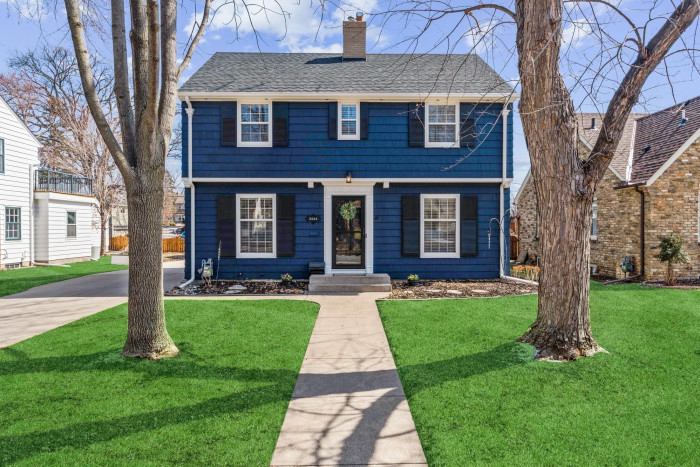
Description: Colonial homes are symmetrical and balanced, with simple, rectangular facades and central entrances. They typically feature multi-pane windows, shutters, gabled roofs, and a prominent front door often framed by columns or decorative trim. The style draws from early American colonial architecture, emphasizing classic proportions and understated elegance.
Example Area: Most prevalent in the Northeastern United States, Virginia to New England.
Common Years Built: 1900s–1950s, especially popular during the Colonial Revival movement in the 1920s and 1940s.
Photo credit: Compass, Colonial Revival.
Cotswold Cottage
Description: Cotswold Cottage style, from the Costwold region of England, consists of a more rustic appearance with decorative limestone or stonework and a thatched or lined roof.
Example Area: Private American residences in the 1920s, however it was more popular prior in native England.
Common Years Built: 1920-1930
Photo credit: Henry Ford Museum
Greek Revival
Description: The Greek Revival Style features classical Greek elements, such as tall columns, porticos, and pediments along with symmetrical shapes and heavy cornices.
Example Area: Government buildings, churches, banks, mansions, and private residences, stretching from the East Coast to the West.
Common Years Built: 1820-1860
Photo credit: Preservation Artisans Guild
Moderne & International
Description: The Moderne & International Styles feature smooth surfaces, minimal ornamentation, open space, and glass facades.
Example Area: These styles are found in skyscapers and corporate buildings as well as even smaller spaces like diners and theaters.
Common Years Built: 1930-1950
Photo credit: Brio Design Homes
Octagon
Description: The Octagon Style, as it sounds, features heavily octagonal shapes.
Example Area: This style is usually prevalent in 19th century homes.
Common Years Built: 1850-1870
Photo credit: Worcester Telegram & Gazette
Queen Anne
Description: Queen Anne homes are highly decorative, with asymmetrical facades, intricate woodwork, and often include towers or turrets. They showcase a variety of textures, colors, and materials, reflecting the opulence of the late Victorian era.
Example Area: Entire Queen Anne neighborhoods are common in cities like Denver or San Francisco.
Common Years Built: 1880–1910
Photo credit: Sweet House Dreams
Ranch
Description: Ranch-style homes are single-story with open floor plans, large windows, and long, low rooflines. They prioritize casual, indoor-outdoor living and often incorporate natural materials to blend with suburban landscapes.
Example Area: Southwest and midwest suburban developments seem to be the majority of this style, an example would be the Chicago suburbs.
Common Years Built: 1940s–1970s
Photo credit: Redfin
Storybook Cottage
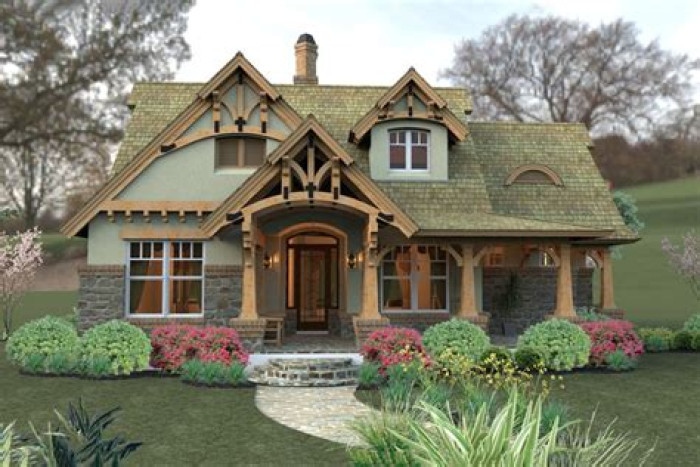
Description:
Storybook Cottage homes look like they stepped out of a fairytale, featuring whimsical, asymmetrical designs with steeply pitched roofs, arched doorways, curved lines, and decorative stone or brickwork. Inspired by European country homes and Hollywood set design of the 1920s, they often feel cozy, magical, and full of personality.
Example Area:
Most commonly found in California, especially in neighborhoods built during the 1920s real estate boom.
Common Years Built:
1920s–1940s
Photo credit: Time to Build / Bing Images
Tudor Revival
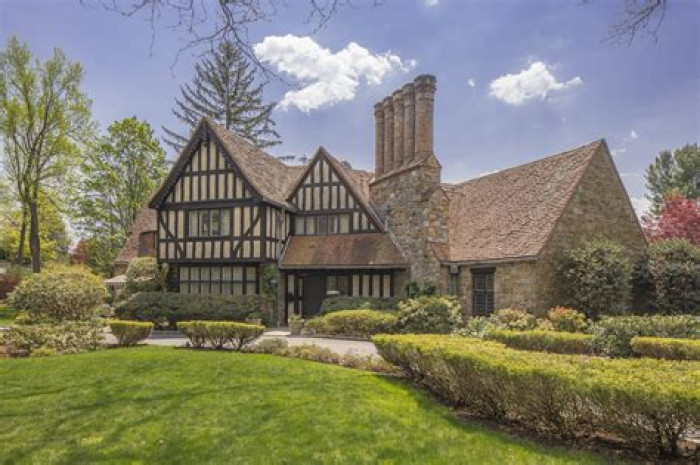
Description:
Tudor Revival homes borrow from medieval English architecture, featuring steeply pitched gables, tall narrow windows, and decorative half-timbering on the exterior. Brick or stone is often used on the lower level, with wood details above. These homes feel stately and storybook-like, making them stand out in any neighborhood.
Example Area:
Widespread in early 20th-century suburbs across the Midwest and Northeast, especially in cities like Chicago and Cleveland.
Common Years Built:
1890s–1940s
Photo credit: William Pitt Sotheby’s International Realty
Rustic Revival
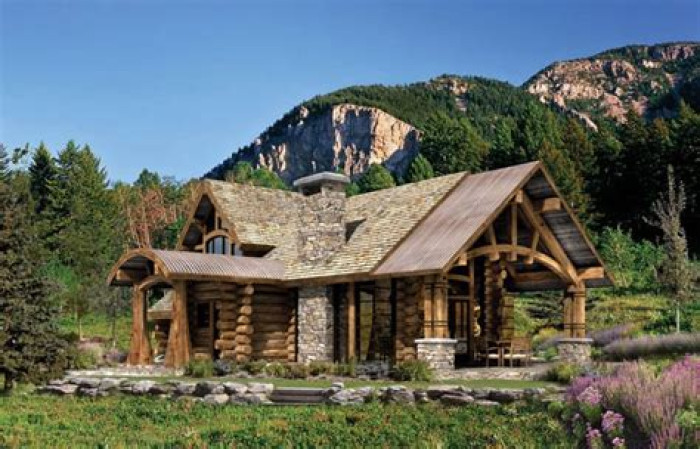
Description:
Rustic Revival homes are inspired by log cabins and mountain lodges, often featuring natural stone, rough-hewn timber, log siding, and broad porches. Designed to blend with nature, this style embraces rugged textures, earthy tones, and hand-built craftsmanship.
Example Area:
Popular in rural areas and park regions across the U.S., especially in the Appalachian region and near National Parks.
Common Years Built:
1910s–1940s
Photo credit: DesignRulz / Rustic Architecture Feature
Mid-Century Modern
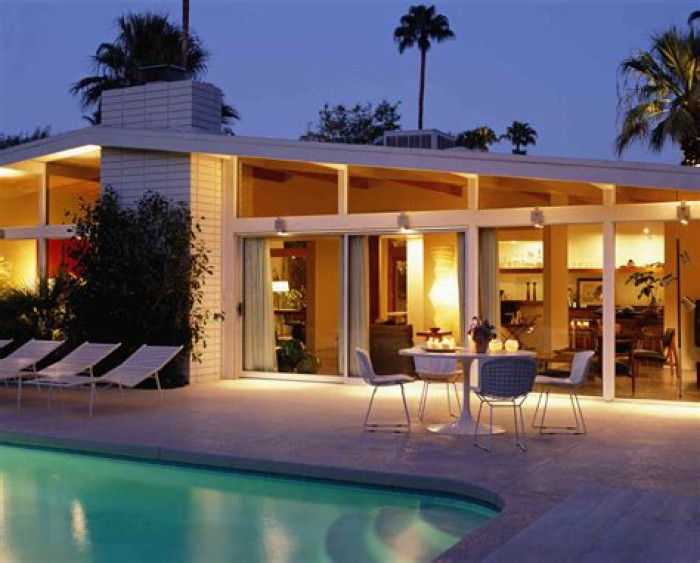
Description:
Mid-Century Modern homes showcase clean lines, flat or low-pitched roofs, and expansive windows that connect indoor and outdoor spaces. These homes prioritize functionality, simplicity, and a sense of openness, often incorporating natural materials and modernist design principles.
Example Area:
Widespread in postwar developments, especially in California, Arizona, and the Pacific Northwest.
Common Years Built:
1945–1970s
Photo credit: The Spruce / Mid-Century Modern Architecture Guide
Roman Classical Revival
Description: The Roman Classical Revival Style showcases domes, columns, and symmetry.
Example Area: American and European museums especially contain this style.
Common Years Built: 1790-1830
Photo credit: Pennsylvania Historical & Museum Commission
Romanesque Revival
Description: The Romanesque Revival Style highlights rounded arches, thick walls, and large stonework.
Example Area: Usually found in churches, civic buildings, and universities across the United States and Europe.
Common Years Built: 1840-1900
Photo credit: Raymond Boyd / Michael Ochs Archives / Getty Images
Split Level
Description: Split-level homes have staggered floors, providing multiple levels connected by short flights of stairs. This design maximizes space and offers a practical layout ideal for family living in the 1970s.
Example Area: Midwest post-war suburbs are most prevalent with this style.
Common Years Built: 1960s–1980s
Photo credit: Redfin
Spanish Eclectic
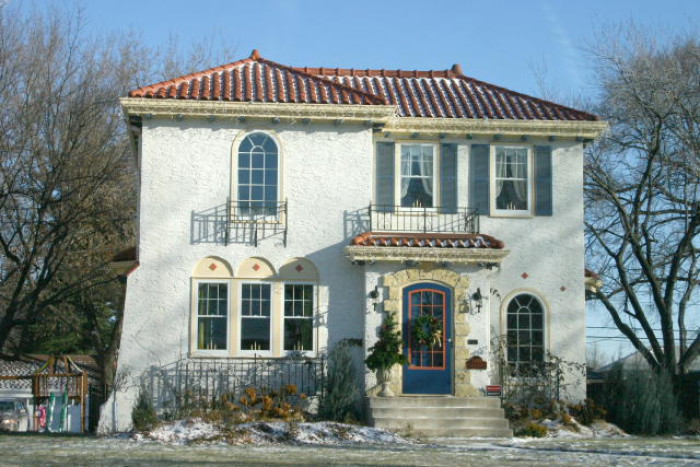
Description: Spanish Eclectic homes are inspired by Spanish and Mediterranean architecture, featuring stucco walls, clay tile roofs, arched doorways, and decorative ironwork. Often asymmetrical, these homes may include features like balconies, wrought-iron railings, and ornamental tile work, adding a romantic, old-world charm. The style reflects the Spanish Colonial influence combined with other Mediterranean details.
Example Area: Frequently seen in Southern California cities.
Common Years Built: 1920s–1940s, particularly during a revival of Mediterranean-inspired designs across the United States.
Source: Houses of Minneapolis
Sullivanesque
Description: Emerging from the early 20th century, Sullivanesque Style highlights terra cotta and "organic" design.
Example Area: Commonly found in commercial buildings, especially in Chicago.
Common Years Built: 1890-1930
Photo credit: Chicago Patterns
Tudor
Description: Tudor-style homes are recognizable by their steeply pitched roofs, half-timbering, tall, narrow windows, and brick or stone exteriors. They evoke the charm of medieval English cottages and bring a fairytale quality to residential areas.
Example Area: Michigan, and other more northwest states, may have more of this style in their neighborhoods.
Common Years Built:
Photo credit: Barbara Falconer Newhall
Victorian
Era: Victorian architecture is an overarching term for various styles popular during Queen Victoria’s reign (1837–1901). It includes Queen Anne, but also styles like Gothic Revival, Italianate, and Second Empire.
Key Features: Victorian homes are known for their ornate detailing, asymmetry, bold colors, and a mixture of materials (brick, wood, stone). They often incorporate eclectic influences, combining elements from different architectural styles.
Design Focus: The emphasis is on complex ornamentation and intricate woodwork. Victorians also used decorative elements like brackets, bay windows, stained glass, and elaborate trim around doors and windows.
Examples of Victorian Styles: Queen Anne, Gothic Revival, Italianate, Second Empire, and Stick.
Example Area: Common in San Francisco and historic neigborhoods of Boston or even New Orleans.
Common Years Built: 1880s–1910s
Photo credit: Captivating Houses
From stately Colonial homes to charming Tudor cottages and sleek Mid-Century Modern designs, architectural styles shape the character of neighborhoods across the country. Each home tells a unique story through its design elements, historical influences, and regional adaptations.
By understanding these architectural styles, you can gain a deeper appreciation for your home’s history and even make more informed restoration or design decisions that honor its original character. Whether you're identifying your home’s era, planning renovations, or simply admiring the beauty of historic architecture, this guide serves as a valuable resource for recognizing the details that make each style unique.
Take a look at your home’s features—its roofline, windows, materials, and overall structure—and see how it aligns with the styles outlined here. You may be surprised by the rich history embedded in your own walls!
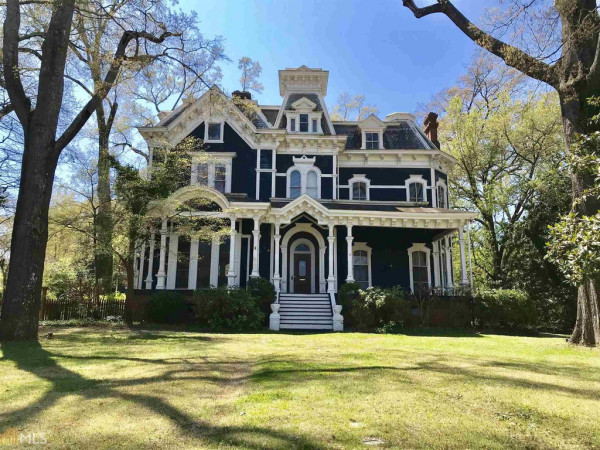
The Stranger Things Creel house: From set piece to iconic landmark
From set design to real-life marvel, the Claremont house and its role as the Stranger Things Creel house.
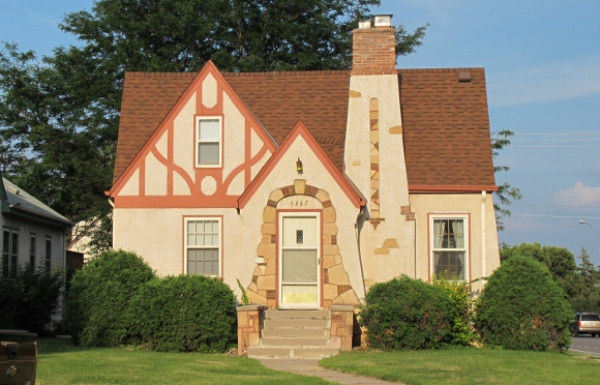
Minneapolis’ Most Popular Home Styles by Era: A Journey Through Architectural History
Here's a comprehensive list of architecture styles in Minneapolis.
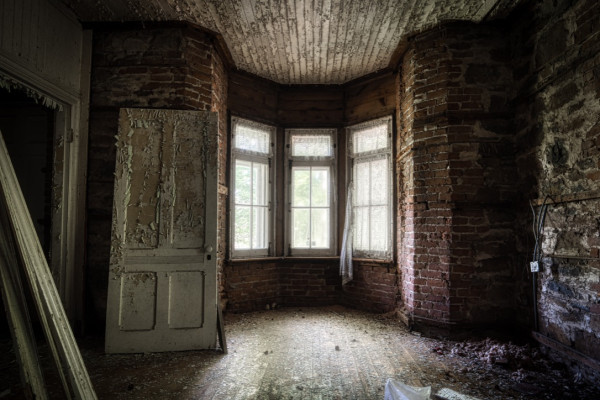
How to Renovate Abandoned Properties
During your life you have probably come across one or two abandoned properties you have considered buying or selling.

From Vanderbilt Estate to Jumbolair: The Fascinating Journey of a Celebrity Fly-in Oasis
Discover the captivating transformation of Jumbolair: from Vanderbilt Estate to celebrity fly-in oasis. Explore the allure of exotic animals, star residents, and the nation's longest private runway. Unveil the secrets of luxury living and aviation passion in this thrilling article!
